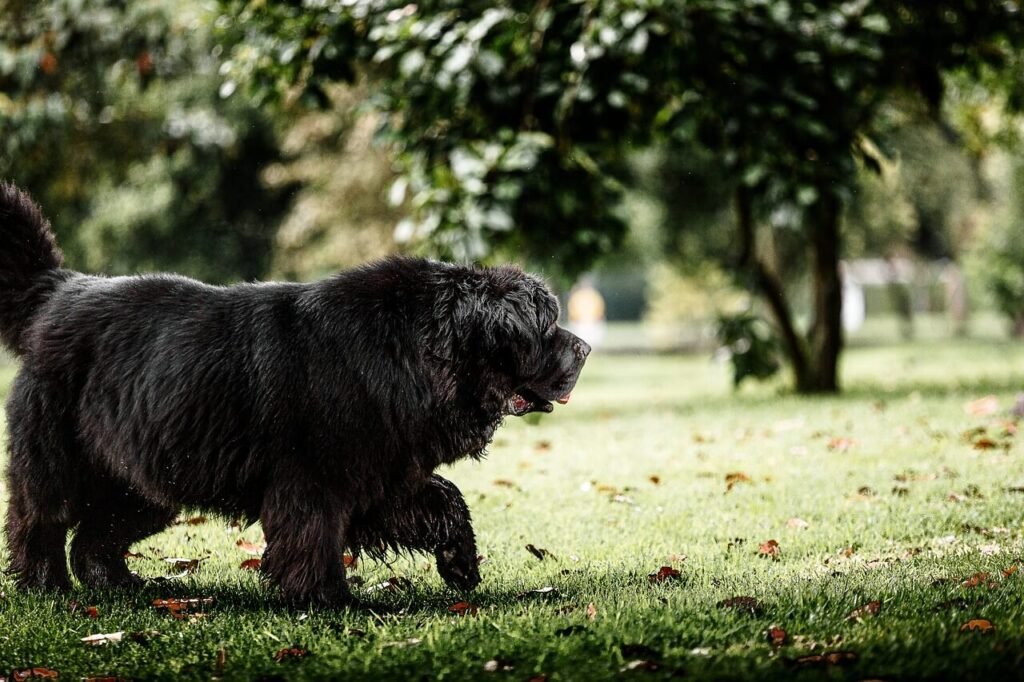Understanding Ovariohysterectomy in Dogs: A Vital Procedure for Your Pet’s Health
An ovariohysterectomy , commonly known as spaying, is a surgical procedure that removes a female dog’s ovaries and uterus. This routine operation is one of the most common veterinary procedures performed worldwide and plays a crucial role in maintaining your dog’s health and well-being. While some pet owners may feel apprehensive about the surgery, understanding its benefits, risks, and recovery process can help you make an informed decision. In this blog post, we’ll explore everything you need to know about an ovariohysterectomy in dogs—from why it’s recommended to how you can support your furry friend through recovery. Let’s dive in and ensure your dog lives a happy, healthy life!
Why Is an Ovariohysterectomy Recommended for Dogs?
An ovariohysterectomy is more than just a routine surgery—it offers numerous health and behavioral benefits for your dog. Here’s why veterinarians often recommend this procedure:
Prevention of Unwanted Litters
Spaying eliminates the risk of accidental pregnancies, helping to control the pet population and reduce the number of homeless animals.Reduction in Cancer Risks
Removing the ovaries and uterus significantly lowers the chances of ovarian, uterine, and mammary gland cancers, especially if done before the first heat cycle.Elimination of Heat Cycles
Spayed dogs no longer experience messy and inconvenient heat cycles, which can last up to three weeks twice a year.Prevention of Pyometra
Pyometra, a life-threatening infection of the uterus, is entirely prevented by removing the reproductive organs during an ovariohysterectomy.Behavioral Improvements
Spaying can reduce behaviors like roaming, aggression, and excessive vocalization linked to hormonal changes during heat cycles.
These benefits highlight why an ovariohysterectomy is not just a choice but often a necessity for your dog’s long-term health. By opting for the procedure, you’re investing in their quality of life.
What to Expect During the Ovariohysterectomy Procedure
If your dog is scheduled for an ovariohysterectomy, it’s natural to wonder what happens during the surgery. Understanding the process can ease any concerns you may have.
Pre-Surgical Examination
Your veterinarian will perform a thorough check-up and may request blood tests to ensure your dog is healthy enough for anesthesia.Anesthesia Administration
General anesthesia is used to keep your dog asleep and pain-free throughout the procedure. Modern anesthetics are safe and closely monitored.Incision and Removal
A small incision is made along the abdomen, and the ovaries and uterus are carefully removed. The incision is then closed with sutures or staples.Post-Surgical Monitoring
After the surgery, your dog will be monitored closely as they wake up from anesthesia to ensure there are no complications.Discharge Instructions
Once stable, your dog will be sent home with detailed aftercare instructions, including medications and activity restrictions.
Knowing what to expect can help you prepare for the day of the surgery and ensure a smooth experience for both you and your dog.
Check this guide 👉Does Spaying Calm a Dog Down? Best 7 Expert Tips!
Check this guide 👉Infected Swollen Spay Incisions in Dogs: Best 7 Health Tips!
Check this guide 👉My Dog Jumped After Being Spayed: Best 7 Expert Tips!

Benefits of Ovariohysterectomy | Risks and Considerations |
|---|---|
Prevents unwanted litters | Requires general anesthesia |
Reduces cancer risks | Risk of surgical complications (rare) |
Eliminates heat cycles | Temporary discomfort post-surgery |
Prevents pyometra | Weight gain if diet isn’t managed |
Improves behavior | Cost of the procedure varies |
Recovery Tips After an Ovariohysterectomy
Proper care during recovery is essential to ensure your dog heals quickly and avoids complications. Follow these tips to support your dog’s healing process:
Limit Physical Activity
Restrict running, jumping, and playing for at least 10–14 days to allow the incision site to heal properly.Monitor the Incision Site
Check the surgical area daily for signs of infection, such as redness, swelling, or discharge.Administer Medications as Directed
Give prescribed pain relievers and antibiotics exactly as instructed by your veterinarian.Use an Elizabethan Collar
Prevent your dog from licking or chewing the incision by using a cone or recovery collar.Schedule a Follow-Up Visit
Attend the post-operative check-up to ensure the incision is healing well and remove any external sutures or staples.
By following these guidelines, you can help your dog recover comfortably and minimize the risk of complications. Patience and attentiveness are key during this period.
Common Myths About Ovariohysterectomy Debunked
Despite its widespread acceptance, misconceptions about ovariohysterectomy persist. Let’s address some common myths to clear up any confusion:
Myth: Spaying Makes Dogs Lazy
Spaying does not inherently change a dog’s energy levels; behavior shifts are often due to aging or other factors.Myth: It’s Cruel to Spay a Dog
The procedure is performed under anesthesia, ensuring your dog feels no pain during the surgery.Myth: Spaying Causes Weight Gain
While metabolism may slow slightly, weight gain is preventable with proper diet and exercise.Myth: Only Female Dogs Need Spaying
Male dogs also benefit from neutering, which reduces aggression, marking, and roaming tendencies.Myth: Spaying Is Too Expensive
Many low-cost clinics and financial assistance programs are available to make the procedure affordable.
Understanding the facts can help dispel fears and encourage responsible pet ownership. Spaying is a safe, beneficial procedure for most dogs.
Signs Your Dog Is Ready for an Ovariohysterectomy
Deciding when to schedule your dog’s ovariohysterectomy can feel overwhelming, but certain signs indicate they’re ready for the procedure. Here are some key indicators:
Age and Health Status
Most dogs are ready for spaying between 6 and 12 months of age, provided they’re in good health.Completion of Vaccinations
Ensure your dog is up-to-date on vaccinations to minimize the risk of infections during recovery.No Signs of Illness
Schedule the surgery when your dog is free from any illnesses or medical conditions that could complicate anesthesia.Behavioral Cues
If your dog begins exhibiting behaviors like restlessness or aggression linked to hormonal changes, it may be time to consider spaying.Veterinarian’s Recommendation
Trust your vet’s guidance on the ideal timing based on your dog’s breed, size, and overall health.
These signs can help you determine the best time for your dog’s surgery. Always consult your veterinarian to ensure the timing aligns with your dog’s unique needs.
How to Prepare Your Home for Post-Surgery Recovery
Creating a safe and comfortable environment is crucial for your dog’s recovery after an ovariohysterectomy. Here’s how you can prepare your home:
Set Up a Quiet Space
Designate a calm, quiet area where your dog can rest away from noise and other pets.Remove Hazards
Clear the space of slippery floors, sharp objects, or anything that could irritate the incision site.Stock Up on Supplies
Have essentials like an Elizabethan collar, soft bedding, and prescribed medications ready before bringing your dog home.Prepare a Restricted Area
Use baby gates or playpens to limit your dog’s movement and prevent jumping or running.Plan for Assistance
Arrange for someone to help monitor your dog during the first few days of recovery if needed.
By preparing your home in advance, you’ll create a stress-free environment that promotes healing and minimizes complications. A little planning goes a long way in ensuring a smooth recovery.
Tips for Managing Your Dog’s Diet After Surgery
Proper nutrition plays a vital role in your dog’s recovery after an ovariohysterectomy. Here are some tips to manage their diet effectively:
Feed Small, Frequent Meals
Offer smaller portions more frequently to avoid overwhelming your dog’s digestive system.Choose Easily Digestible Foods
Opt for bland, easily digestible foods like boiled chicken and rice to reduce the risk of upset stomachs.Avoid Treats Initially
Refrain from giving treats or table scraps until your dog has fully recovered to prevent dietary upsets.Monitor Water Intake
Ensure your dog stays hydrated, but watch for excessive drinking, which can indicate discomfort or illness.Gradually Resume Normal Diet
Once your vet gives the all-clear, slowly reintroduce your dog’s regular food to avoid digestive issues.
A thoughtful approach to your dog’s diet can support their healing process and prevent unnecessary setbacks. Always follow your veterinarian’s dietary recommendations for the best results.
FAQ
At what age should my dog undergo an ovariohysterectomy?
Most veterinarians recommend spaying between 6 and 12 months of age, but timing can vary based on breed and health.
Will my dog experience pain after the surgery?
Some discomfort is normal, but pain medications prescribed by your vet will help manage it effectively.
Can an older dog still be spayed?
Yes, though older dogs may require additional pre-surgical testing to ensure they’re healthy enough for anesthesia.
How long does it take for my dog to recover fully?
Most dogs recover within 10–14 days, but full internal healing may take several weeks.
Are there alternatives to an ovariohysterectomy?
While other methods exist, such as ovary-sparing spays, they are less common and may not offer the same health benefits.
Investing in Your Dog’s Future Through Ovariohysterectomy
An ovariohysterectomy is more than just a routine surgery—it’s a proactive step toward ensuring your dog’s long-term health and happiness. From preventing serious medical conditions to reducing behavioral issues, the benefits far outweigh the temporary inconvenience of recovery. By understanding the procedure, preparing for it, and providing attentive post-operative care, you’re giving your furry companion the best chance at a vibrant, fulfilling life. Remember, spaying isn’t just about your dog—it’s about contributing to a healthier, more responsible pet community. Speak with your veterinarian today to learn more about how an ovariohysterectomy can benefit your beloved pet.
Why Is My Cats Second Eyelid Showing? Best 7 Expert Tips! Understand causes, health signs, and how to respond when your cat’s third eyelid becomes visible.
How Do I Know If My Cat Died Peacefully? Best 7 Expert Tips! Discover the quiet signs of a peaceful feline passing and find comfort in their final moments.
Cat Allergy Eyes: Best 7 Expert Tips! Discover why your eyes react to cats and learn proven strategies for relief—without giving up your feline friend.
Why Do Abyssinian Cat Colors Matter? Best 7 Expert Tips! Discover the genetics, rare hues, and care secrets behind Abyssinian coat colors for a healthier, happier cat.





